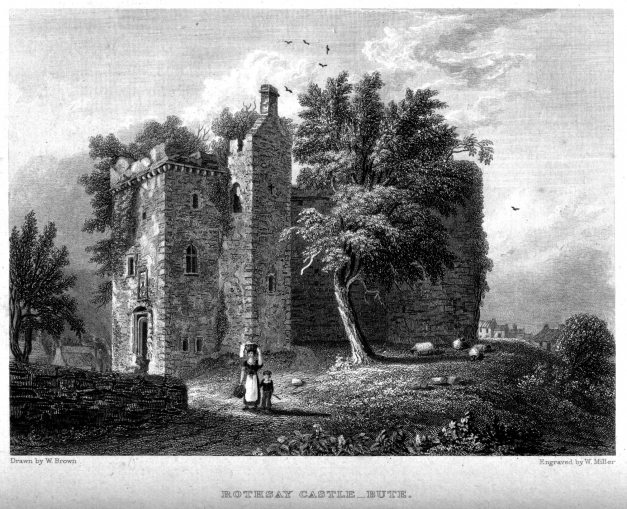Rothesay Castle

Rothesay Castle is a ruined castle in the town of Rothesay, Isle of Bute, Scotland (Scottish Gaelic: Baile Bhòid, Eilean Bhòid or An t-Eilean Bòdach, Alba). It dates to the early 13th-century and is thought to have been built by either Alan fitz Walter, Steward of Scotland (1140 – 1204), or by his son Walter Steward of Dundonald (died 1246). The castle is known for its close links with the Stewarts. They were hereditary high stewards and, from 1371, a royal dynasty. Major works were undertaken on Rothesay Castle in the later 1400s and early 1500 by James IV and James V. Rothesay then fell into ruins and was restored only in the 1800s, by the Crichton Stuarts, as keepers of the castle. The castle comprises a large curtain wall, with four round towers, together with a 16th-century forework. It is surrounded by a broad moat.
The castle was built as part of the ongoing conflicts between the expanding Kingdom of Scotland and Norway and exchanged hands on a number of occasions. The Isle of Bute also known as Bute was once part of the Kingdom of the Isles or Kingdom of Mann and the Isles. They consisted of the Isle of Man, the Hebrides and the islands of the Firth of Clyde from the 9th to the 13th centuries AD. Under the Treaty of Perth in 1266, Norwegian King Magnus VI, ceded the Kingdom of the Isles to the Scottish king, Alexander III, in return for a considerable sum of money. Alexander Stewart had been the chief military commander of Scottish forces, and was now rewarded by King Alexander by being confirmed in possession of Bute and Arran.
Link: Historic Environment Scotland - Àrainneachd Eachdraidheil Alba.
Image: Rothesay Castle, Bute. Engraving by William Miller after W Browndate 1830.
Celtic nation:
- Scotland
Itinerary:
- Scotland Argyll & Bute
Place type:
- Castle





